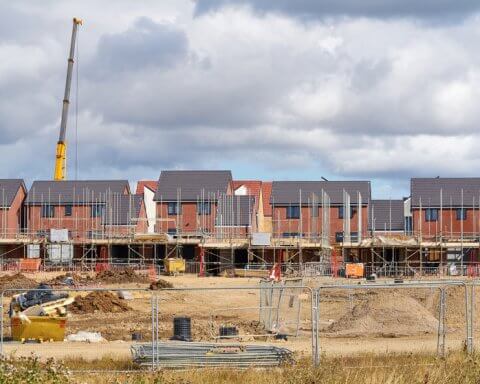British Columbia Investment Management Corp. is mining gold from green buildings.
The fund manager includes B.C.’s seven public sector pension funds and takes principles for responsible investment (PRI) further than simply considering environmental, social, and governance (ESG) risk factors when reviewing potential investments. Their commercial real estate group is looking to generate greater returns by seeking out energy-efficient commercial buildings that provide lower operating costs and higher rent.
It’s a strategy of investing in “energy productive” real estate that other Canadian pension managers, including the giant Canada Pension Plan Investment Board (CPPIB), have not pursued as aggressively.
Even with its $9-billion real estate portfolio, CPPIB may be leaving significant profits on the table by failing to invest in greening their buildings.
“We expect in the next three or four or five years, [green buildings] will become a bigger part of their real estate portfolio,” says Eugene Ellmen, executive director of Social Investment Organization, a non-profit group that represents ethical investors.
Despite several international studies done for the UN pointing to the attractive return on investments in building efficiency, there is a common impression among institutional investors that green buildings involve greater upfront costs and potential liability issues.
“The bigger risk with green buildings is not getting involved,” according to Washington consultant David Gardner. The number of green certified buildings in Canada leapt from 86 in 2005 to 1,100 in mid-2008, he notes, with a similar trend in the U.S. and around the world. In a report to a UN investors’ conference last year, he noted conventional buildings might be perceived as inefficient or even obsolete. As a result, they would attract lower rents, and fewer tenants than high-efficiency buildings.
CPPIB is a signatory of the UN Principles for Responsible Investment, and has appointed an executive team to implement that policy. But much of that activity still revolves around the research and inclusion of ESG factors in due diligence work prior to investing in publicly traded companies, as opposed to direct investments in the profit generating potential of green buildings.
Unlike other public pension funds, such as Québec’s Caisse de Dépôt et Placement, CPPIB has no mandate to pursue social or environmental objectives for their own sake.
In contrast, British Columbia Investment Management Corp.’s (BCIMC) chief executive Doug Pearce has highlighted his fund’s direct investments in green buildings. When assessing mortgage applications, BCIMC favours projects with environmentally-sound design principles that match clients’ risk-return requirements. As of March 2010, 35 per cent of the B.C. funds’ income-producing, domestic real estate portfolio was certified under LEED or BOMA BEST, with a target of getting that level above 50 per cent.
But there are a number of barriers in the way of more aggressive investment in green buildings by pension funds and other asset managers. Most leases now have split incentives—tenants rather than owners are responsible for utility bills leaving little incentive for owners to spend money to lower those bills in existing buildings.
At the same time, there is little unbiased information available that clearly defines the value of certified green buildings. Most research comes from ethical investing groups or the UN—organizations interested in the environmental impact of the investments over profitability.
Another hurdle to overcome is the short-term horizon of most investment managers. Most building owners demand payback from their energy efficiency investment within three years at most, says David Helliwell, chief executive officer of Pulse Energy, which installs energy-efficiency software systems in buildings.
Any investment needs to balance quick returns and steady returns. It’s not just about maximizing short-term returns, but balancing the needs of future beneficiaries against those of current retirees. Pension funds should be thinking long-term, making environmental and social issues more relevant because the future health of markets depends on them, says former Ontario Securities Commission head Ed Waitzer.







